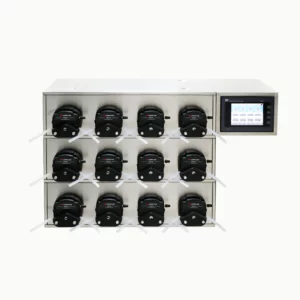Peristaltic filling machines are not commonly utilized in the operation of geothermal heating systems. Geothermal heating systems rely on the natural heat stored beneath the earth’s surface to provide heating and cooling for buildings. These systems typically involve the circulation of a heat transfer fluid (often water or a water-based solution) through a series of underground pipes or loops to exchange heat with the surrounding soil or rock.
While peristaltic pumps are versatile and used in various industries for fluid transfer and dosing applications, they are not typically employed in the operation of geothermal heating systems due to several factors:
- System design: Geothermal heating systems are designed to circulate large volumes of water or heat transfer fluid through underground piping networks. Peristaltic pumps may not be suitable for handling the high flow rates and pressures required in these systems.
- Pump efficiency: Peristaltic pumps are generally best suited for low-flow, low-pressure applications where precise dosing or gentle pumping action is required. In geothermal heating systems, more robust and efficient pumps, such as centrifugal pumps or positive displacement pumps, peristaltic filling machine are typically used to circulate fluid through the system efficiently.
- System compatibility: Peristaltic pumps may not be compatible with the high-temperature operating conditions commonly encountered in geothermal heating systems. These systems often require pumps capable of handling elevated temperatures without compromising performance or durability.
- Maintenance considerations: While peristaltic pumps are known for their simplicity and ease of maintenance, they may not be the most practical choice for large-scale geothermal heating systems, which require reliable and robust pumping solutions capable of continuous operation with minimal downtime.
Instead of peristaltic filling machines, geothermal heating systems commonly utilize specialized pumps, valves, and controls designed specifically for geothermal applications. These pumps are typically selected based on factors such as flow rate, pressure requirements, fluid compatibility, temperature range, and system efficiency.
Overall, while peristaltic pumps have diverse applications in various industries, they are not commonly utilized in the operation of geothermal heating systems. These systems rely on more specialized pumping solutions tailored to the unique requirements of geothermal energy extraction and heat exchange processes.
